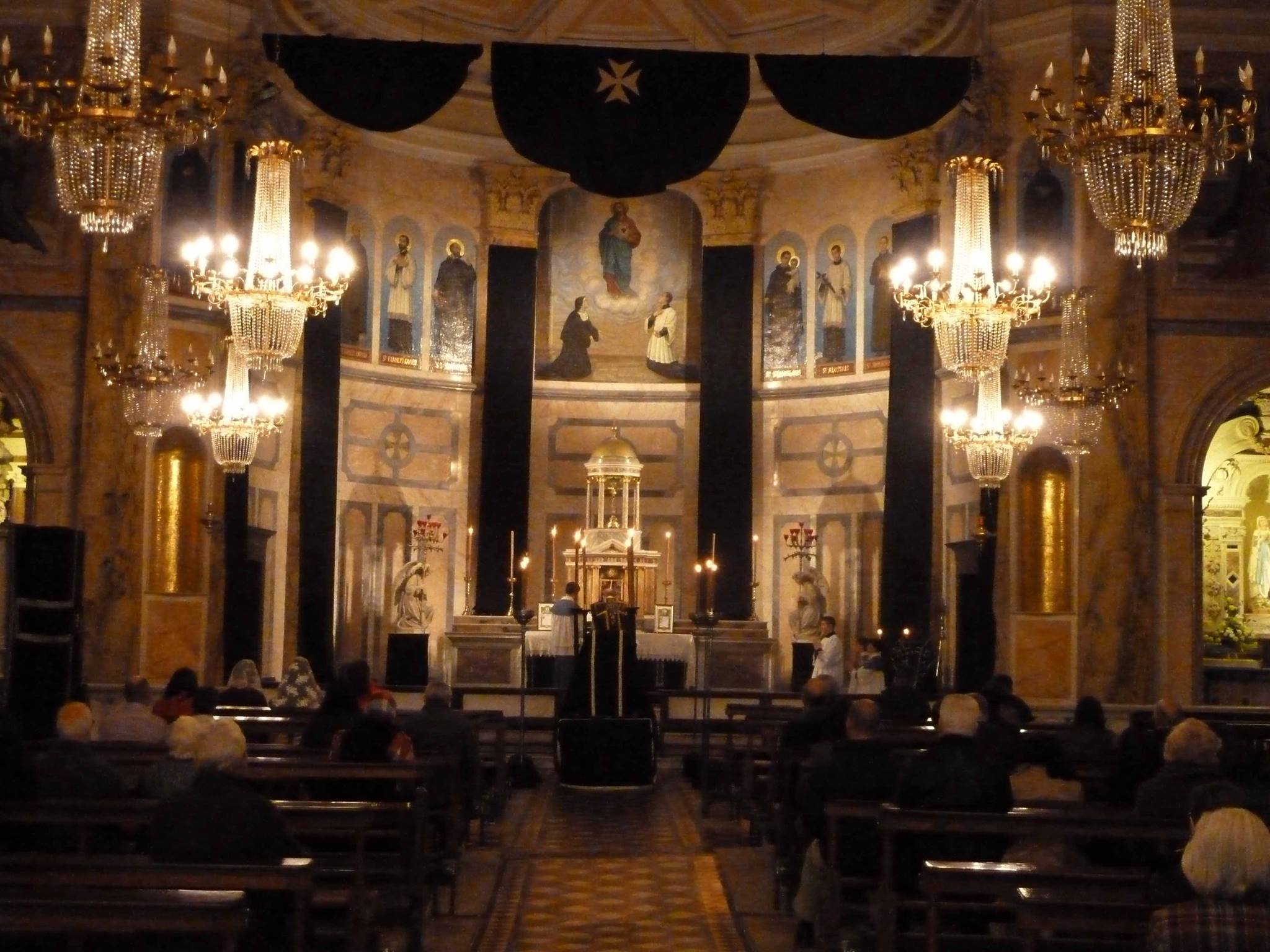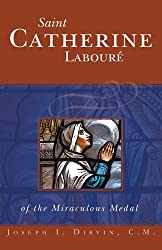
CJS.Org Introductory Remarks:
Here is the second part of this series concerning the Apparition of Our Lady of La Salette, taken from the 1904 The Blessed Virgin in the Nineteenth Century: Apparitions, Revelations, Graces by Bernard St John.
There are the four parts parts in this series so far:
- Part 1 The Apparition
- Part 2 Maximin Giraud meets the Curé d’Ars
- Part 3 The Secrets of La Salette
- Part 4 The Fate of Maximin Giraud
There is also a very personal review of a haunting biography of Mélanie Calvat here.
We now take up the continued story of Mélanie Calvat and Maximin Giraud.
In the first part, we explained that we hope to cast light on that enigmatic, maligned visionary of La Salette – Mélanie Calvat.
Admittedly however, this second part of the series is not primarily about Mélanie Calvat, but Maximin Giraud, the young boy who also beheld the Weeping Virgin alongside Mélanie.
For it happened that as the story of La Salette unfolded, Maximin was to encounter Saint John Vianney, the holy priest of Ars in 1851.
The Cure d’Ars was an old man by then – and a renowned figure in Catholic France. For thousands upon thousands besieged the tiny village of Ars to meet the Saint who performed miracles to astonish. And the holy man responded to the crowds that came with sixteen hour days in his confessional …
The story of Saint John Vianney is utterly astounding – and not without parallels to the story of Saint Padre Pio a century later. More about this holy man may be found at this page of our website – which contains not only a review of his biography, but also some notable extracts from that biography.
But here we have solely to do with how the story of Saint John Vianney once intersected with that of La Salette—RB
Advertising My First Book—Article Continues Below

From Bernard St John:

Mélanie and Maximin had been under careful religious training for four years, when in 1850 circumstances led to the one-time cowherd lad going in company with others to see the Curé d’Ars.
It was hoped that the far-famed man of God would throw some light upon Maximin’s destiny, for hitherto the boy had proved a puzzle to those concerned in him.
He remained restless, wayward, and though not without good instincts and a certain quickness of intelligence, and a certainly good heart, seemed incapable of steady application. At times he wished to be a priest and even a missionary, and at other times a soldier.
It was evening when the little party reached Ars. They were at once told by a young priest, Raymond by name, acting as the Curé d’Ars vicaire, that Abbé Vianney could not be seen by them until the following day.
In the short conversation that ensued between Maximin and the vicaire, about as much harm was done to a holy cause as it was possible to do in the course of a few minutes.
This is judging from a merely human standpoint. In reality, good was to come out of an apparent evil.
Abbé Raymond happened to be an unbeliever in the Apparition of La Salette, and with as little tact as politeness, he managed to let his views be known at once.
After letting the boy explain himself with respect to the event of La Salette, he said abruptly: “I am no believer in that story.”
The young priest needed no more than this in order to set the story afloat, which he quickly did, that Maximin had retracted concerning the Apparition. It is, moreover, more than probable that before retiring to rest that night the Curé heard the vicaire’s version of what had occurred.
During the hours that followed Maximin did not sleep. Having been told that the Curé d’Ars knew everything, he said to himself: “He will know whether it was the Blessed Virgin I saw or only a phantom.”
Early the next morning he was kneeling at the Curé’s feet.
One of the first questions put to him was as to whether he had seen the Blessed Virgin.
“I do not know whether I have seen her,” was the reply. “I saw someone a lady (une dame)”
“If you know that it was the Blessed Virgin, tell the people so, in order that they may believe in La Salette.”
Abbé Vianney took these words to be a retraction on Maximin’s part of his statements concerning the Apparition. He did not know, as so many others did, that Mélanie and Maximin, when questioned on this subject, had never made any other reply than that they had seen a “beautiful lady.”
For years, this remained their favourite term for expressing what they had seen. Left to themselves, they would probably never have dared come to a formal conclusion that the “beautiful lady” was the Blessed Virgin.
Thus on a track of misunderstanding, the boy and the priest were to continue so for the moment. Whether or not this interview had a sacramental character, Abbé Vianney refused to divulge anything concerning it until later on when he had Maximin’s permission to do so.
Maximin, on his side, denied all retraction, adding that the Curé of Ars had not been able to hear him well through being deaf, and that he had spoken indistinctly through want of teeth.

Almost his first words on returning to Grenoble were: “Now they speak contemptuously of La Salette; but La Salette is like a flower, which in winter is covered up with dung and rubbish, but which in summer springs forth more beautiful than ever.”
We find Maximin shortly afterwards a pupil at the Little Seminary of Grenoble, placed there by his bishop, Mgr. Brouillard.
In the meantime, Abbé Raymond, the young vicaire of Ars, with the object of throwing- discredit on the Apparition of La Salette, published an account of Maximin s visit, and sent copies of his pamphlet to numerous members of the clergy.
On this the Bishop of Grenoble wrote to the Curé d’Ars, who, however, refused to discuss the subject of Maximin’s interview with him until, as has been said, he had received the boy’s permission to do so.
The permission was readily given, and M. Melun, arch-priest of Corps, and Abbe Rousselot, of Grenoble, became bearers of the same in written form to Ars …

In his letter, Maximin said that M. Vianney must have misunderstood him, if the latter had taken any words of his to mean a retraction of his statements concerning the Apparition.
In his conversation with the two priests, the Curé d’ Ars admitted that he might have been mistaken in his interpretation of the boy’s answer to the question as to whether he had seen the Blessed Virgin.
A few days afterwards, he wrote as follows to the Bishop of Grenoble: “Monseigneur, I have blessed and distributed a great many pictures representing the event of La Salette; I have distributed bits of the stone on which the Blessed Virgin was seen seated; I have often spoken of the Apparition in my sermons.
I think, Monseigneur, there are few priests in your diocese who have done more for the devotion than I have.
Foreword for Monarchy by Roger Buck
When the little cowherd told me he had not seen the Blessed Virgin, I was ill for two days. After all, Monseigneur, there is no great harm done, for if the affair of La Salette be of God, man will be powerless against it.”
About this time, or shortly afterwards, that is, in 1850, Canon Bez, of Lyons, writing to Abbe Rousselot, asked whether it was true that Maximin had retracted in presence of the Curé of Ars.
In the same letter he said: “So convinced am I of the truth of the Apparition, that I should be prepared to defend it even in the case of Maximin’s denial. Such a prodigy of falsehood on the part of the two voyants would be more astounding than the miracle of the Apparition, against which all hell is raging.”
Abbé Rousselot wrote in reply: “Maximin told M. Vianney exactly what he has been telling us for the last four years, and what you and I after our long and minute enquiries have both written. When questioned, he said that he had seen someone on the mountain that is, the “belle dame”.
“By the words someone he means just what your account and mine mean; but when the question is put to him as to whether he saw the Blessed Virgin, he hesitates in replying Yes.”
To undo still further the ill effects of this misunderstanding, the Bishop of Grenoble wrote to Mgr. Divie, Bishop of Belley, asking him to interfere in the matter. There were at Belley at the time as guests of Mgr. Divie, Mgr. Chatrousse, Bishop of Valence, and another prelate. These helped to throw light on the question.
The result of their deliberations in common was given by Mgr. Divie as follows, in a letter to the Bishop of Grenoble: “We look upon it as certain that the two children (Mélanie and Maximin) had not agreed together to deceive the public, and that they really saw someone on the mountain who spoke to them. Was it the Blessed Virgin? Everything points to the conclusion that it was.”
Mgr. Divie went on to advise the Bishop of Grenoble to build a chapel on the site of the Apparition, in the case of the pilgrimage movement thither continuing.
We will here dwell for a few moments on the Curé d’ Ars attitude with respect to Maximin. That the evident misunderstanding between him and the lad caused him to have doubts concerning the reality of the Apparition is certain, though not to the extent that enemies pretended.
For the following eight years, however, the holy man was at times more or less troubled on the subject. He was known to say in reference to it:
“When doubt leaves me, peace returns; but when the devil casts me back on my doubt, then am I as one dragged along among stones and brambles.”
In October of 1858, it began to be said in different quarters that the Curé d’Ars had quite come back to his former belief in the Apparition of La Salette.
It appears that for some little time previously M. Vianney had been subject to great mental distress and interior suffering, from which he had earnestly prayed to be delivered, and that perfect peace and calm had suddenly come to him on making an act of faith in the Apparition by Mount Gargas.
It was, to use his own words, as if his back had been delivered of a sack of lead.

About this time M. Guillemin, Vicar-General of Belley, delegated to this effect, went to see the Curé d’ Ars, with the object of eliciting from him details concerning the change that had come over him relative to La Salette.
From his report of the interview we gather the following details: M. Vianney, suffering more intensely one night than usual, and praying more intensely than usual for his deliverance, the thought occurred to him of making an act of faith in the Apparition of La Salette.
He said the word Credo, and the effect was instantaneous, his mental anguish ceasing at once.
He then asked Heaven to send in his way a priest of the diocese of Grenoble, his object in making the request being no doubt to be able to undo to a certain extent the effect created by his previous state of doubt.
The following day a priest of the diocese of Grenoble called on the Curé d’Ars in his sacristy, and asked him what he thought of the Apparition of La Salette. The Curé replied: “Not only may it be believed in, but it ought to be believed in.
M. Vianney afterwards considered himself to be the object of a signal favour on Heaven’s part, due to the intervention of Notre-Dame de la Salette.
Afternote:
It should be noted that the text above has been very, very minimally edited – mainly to break up long paragraphs for easier reading from a computer screen. Nothing of any substance whatsoever has been altered. Also to help navigate through this series, we offer:
- Part 1 The Apparition
- Part 2 Maximin Giraud meets the Curé d’Ars
- Part 3 The Secrets of La Salette
- Part 4 The Fate of Maximin Giraud

Buying Books at Amazon Through These Links Gives Us a Commission. This Supports Our Apostolate. Thank You if You Can Help Us Like This!









Comments
comments are currently closed
4 responses to “Mélanie Calvat and Our Lady of La Salette—Pt. 2: Maximin Giraud meets the Curé d’Ars”
[…] Bernard St John’s book continues the story of Mélanie, Maximin and La Salette, as we have indicated. The following part can be found here. […]
[…] Part 2 Maximin Giraud meets the Curé d’Ars […]
[…] Part 2 Maximin Giraud meets the Curé d’Ars […]
[…] in another of the eight approved apparitions, she appeared in 1846 to the young Mélanie Calvat and Maximin Giraud as they tended flocks near La Salette-Fallavaux in the French […]